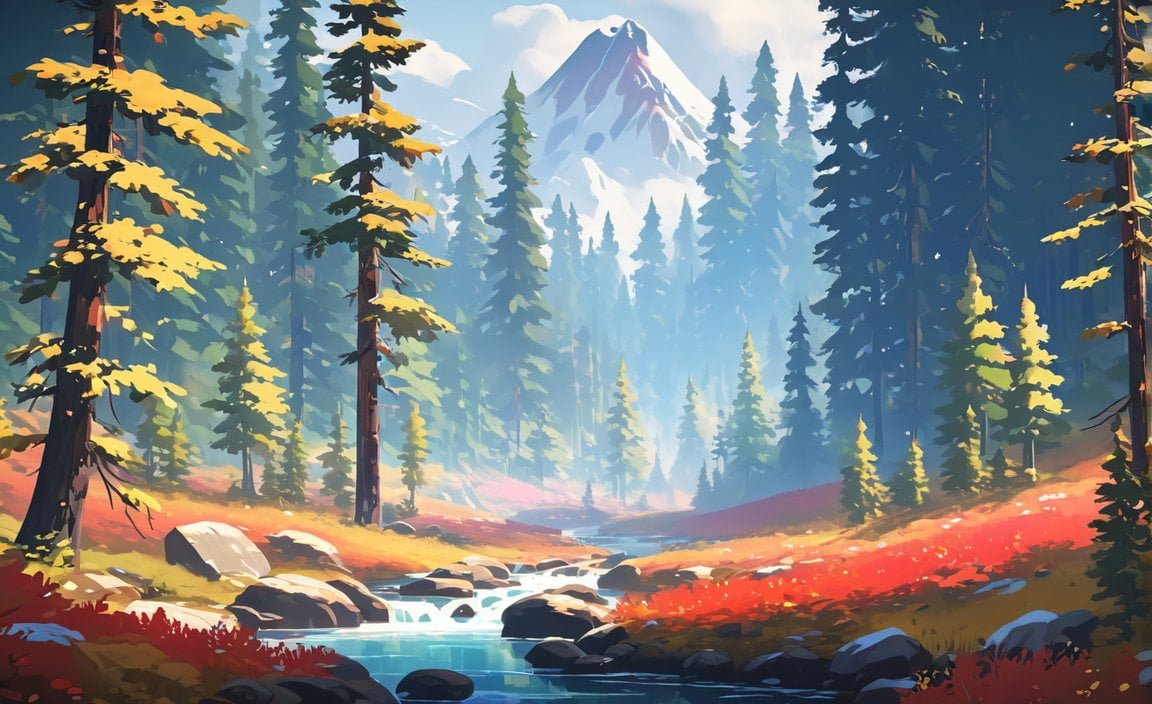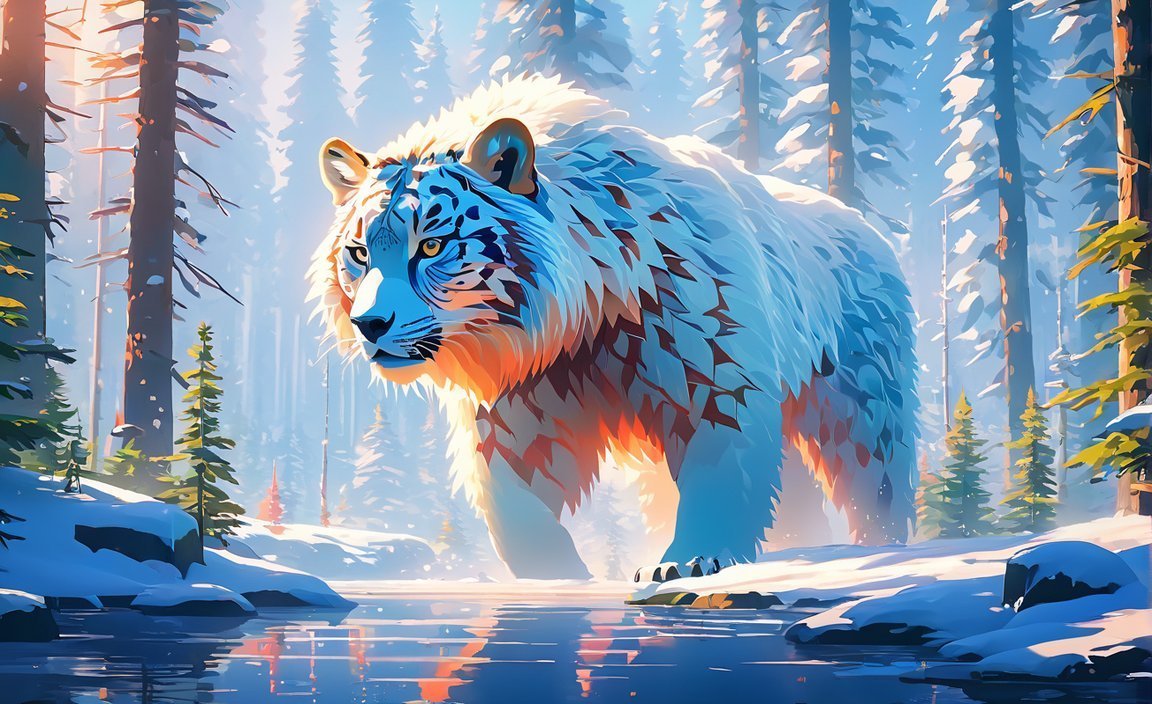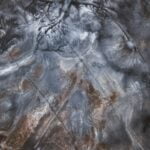Get ready to embark on a captivating journey through the taiga, as we unveil 10 fascinating facts about this remarkable biome. From its breathtaking landscapes to its incredible biodiversity, the taiga offers a world of wonder waiting to be explored. Join us as we delve into the intricate web of life that thrives in this unique habitat, uncovering the secrets of its flora, fauna, and ecological significance. Brace yourself for a thrilling adventure into the heart of the taiga!

Key Takeaways:
- The Taiga is one of the largest biomes on Earth, covering over 11 million square miles, and forms an Intact Forest Landscape (IFL).
- The Taiga has a cold climate and receives low amounts of rainfall and snow.
- Parts of the Taiga experience the midnight sun phenomenon during summer and polar night phenomenon during winter.
- The soil in the Taiga contains permafrost, which affects vegetation growth.
- Bogs and peatlands are found in the Taiga, with dense layers of partially decomposed plant material.
- Despite poor soil, the Taiga has a rich plant life, with dominant coniferous evergreen trees like spruce, pine, and fir.
- The Taiga is home to a variety of wildlife, including moose, reindeer, lynx, and brown bears.
- The Taiga is found in northern parts of North America, Europe, and Asia, including countries like Russia, Canada, Sweden, and Finland.
- The Taiga acts as a carbon sink, storing large amounts of carbon dioxide and regulating the global climate.
- The Taiga is an important ecosystem that provides resources such as timber, fuelwood, and non-timber forest products.
10 Fun Facts About the Taiga Biome
The Taiga, also known as the boreal forest, is a remarkable biome that covers vast stretches of land across the northern parts of North America, Europe, and Asia. Its unique characteristics and diverse ecosystem make it a fascinating subject to explore. Let’s delve into the intriguing world of the taiga and discover 10 fun facts that highlight its distinctive features.
1. A Massive Expanse of Wilderness
The taiga is an expansive biome, stretching over a whopping 11 million square miles. This vast area makes it one of the largest biomes on Earth. Imagine standing at the heart of this wilderness, surrounded by towering trees and breathtaking landscapes.
2. A Chilling Climate
The taiga is renowned for its cold climate. The temperatures can drop to extreme lows, making winters bitterly cold. But did you know that the taiga also experiences hot and relatively short summers? This climate variation adds an extra layer of intrigue to this unique biome.
3. Welcome to the Land of the Midnight Sun
In some regions of the taiga, during the summer months, the sun remains visible for a full 24 hours. This phenomenon, known as the midnight sun, creates a captivating and surreal experience for those lucky enough to witness it.
4. The Permanently Frozen Ground
Beneath the taiga lies a fascinating feature called permafrost. This permanently frozen ground inhibits the growth of vegetation, making the taiga’s flora and fauna adapt to survive in this challenging environment.
5. Boggy Wonders
Within the taiga, you’ll find bogs and peatlands. These wetland areas have dense layers of partially decomposed plant material, creating fascinating ecosystems with distinctive plant life and providing unique niches for various species.
6. An Evergreen Paradise
Despite the harsh conditions, the taiga boasts a surprisingly rich plant life. Dominated by coniferous evergreen trees like spruce, pine, and fir, this biome showcases the resilience and adaptability of its plant inhabitants.
7. Wildlife Marvels
The taiga is teeming with a diverse array of wildlife. From the mighty moose to the elegant reindeer, from the stealthy lynx to the awe-inspiring brown bear, this biome provides a haven for numerous animal species. Each one has uniquely adapted to survive and thrive in this demanding environment.
8. A Global Presence
The taiga’s reach extends across continents. You can find this extraordinary biome in regions like Russia, Canada, Sweden, and Finland, leaving an indelible imprint on these countries’ landscapes and cultures.
9. Nature’s Carbon Sink
The taiga plays a crucial role in regulating the global climate. Acting as a mighty carbon sink, it stores vast amounts of carbon dioxide, preventing its release into the atmosphere and helping to mitigate climate change. It’s as if the taiga itself is sending a powerful message about the importance of protecting our planet.
10. Rich Resources, Responsible Use
Beyond its ecological significance, the taiga also provides essential resources for human societies. Timber, fuelwood, and non-timber forest products are just some of the valuable commodities we derive from this biome. However, it is vital to manage and utilize these resources responsibly to ensure the taiga’s longevity and the preservation of its unrivaled beauty.
As we conclude our exploration of the taiga, we’ve discovered a world filled with captivating wonders. From its vast expanse and unique climate to its diverse flora and wildlife, the taiga stands as a testament to the resilience and beauty of nature. By understanding and appreciating these 10 fun facts, we can deepen our connection to this extraordinary biome and work towards its conservation for generations to come.
Here are some captivating sentences that encourage the reader to click on the active internal links:
- Did you know that there are 10 fun facts about biomes? Find out more here: 10 fun facts about biomes.
- Explore the fascinating world of grasslands with these 10 fun facts about them: 10 fun facts about grasslands.
- Dive into the intriguing world of ponds and discover 10 fun facts about them: 10 fun facts about ponds.
- Get to know the savanna biome better with these 10 fun facts about it: 10 fun facts about the savanna biome.
- Uncover the wonders of the African savanna with these 10 fun facts about it: 10 fun facts about the African savanna.
Coniferous Trees: The Dominant Features of the Taiga Landscape
The taiga biome, also known as the boreal forest, is a unique and captivating ecosystem that is defined by its striking features and diverse flora and fauna. One of the key characteristics of the taiga is the dominance of coniferous trees, such as pine and spruce, which create an awe-inspiring landscape. Let’s delve into this fascinating aspect of the taiga and uncover some intriguing facts.
1. A Sea of Evergreens
When you step into the taiga, you’ll be greeted by a breathtaking sight – a sea of coniferous trees stretching out as far as the eye can see. These majestic evergreens, with their tall trunks and lush green canopies, define the taiga landscape and create a sense of tranquility and serenity. The abundance of coniferous trees is a hallmark feature of the taiga and provides a habitat for a variety of species.
2. Adaptations for Harsh Conditions
Coniferous trees have evolved remarkable adaptations to survive in the challenging conditions of the taiga. Their needle-like leaves are coated with a waxy substance that helps to reduce water loss and protects them from freezing temperatures. The shape of the trees, with their sloping branches, allows snow to slide off easily, preventing damage to the branches under the weight of heavy snowfall. These adaptations enable coniferous trees to thrive in the harsh winters and short growing seasons of the taiga.
3. A Haven for Wildlife
The dominance of coniferous trees in the taiga provides a vital habitat for a diverse range of wildlife. The dense canopy offers protection and shelter for birds, such as the iconic snowy owl and the elusive Siberian accentor. Many mammals, including the majestic moose and the agile red fox, find refuge among the coniferous trees. Even smaller creatures, like squirrels and voles, rely on the abundance of conifer seeds and the shelter of the trees for their survival.
4. The Silent Work of Trees
Coniferous trees play a crucial role in maintaining the delicate balance of the taiga ecosystem. Through photosynthesis, they absorb carbon dioxide from the atmosphere, helping to mitigate climate change by acting as a carbon sink. The dense network of roots prevents soil erosion and helps in maintaining the stability of the landscape. Additionally, the fallen needles from the trees provide a layer of organic matter that enriches the soil and supports the growth of other plants and fungi in the taiga.
5. A Changing Landscape
While coniferous trees have long been the dominant feature of the taiga, climate change is posing new challenges. Rising temperatures and shifting weather patterns are altering the composition and distribution of tree species in the taiga. Some scientists predict that these changes may lead to an increase in the prevalence of deciduous trees, which are better adapted to warmer conditions. These transitions in the taiga landscape highlight the dynamic nature of this biome and emphasize the importance of understanding and preserving its delicate balance.
Key Takeaways:
- Coniferous trees, including pine and spruce, dominate the taiga landscape.
- These trees have evolved adaptations to survive in the harsh conditions of the taiga, such as needle-like leaves and snow-shedding branches.
- The abundance of coniferous trees provides a habitat for a diverse range of wildlife in the taiga.
- Coniferous trees play a vital role in the taiga ecosystem by absorbing carbon dioxide, preventing soil erosion, and enriching the soil.
- Climate change is affecting the composition and distribution of tree species in the taiga, highlighting the need for conservation and adaptation efforts.
Sources:
– Wikipedia – Taiga
– Climate of the Arctic – Taiga Climate
The Incredible Wildlife of the Taiga: Discovering Iconic Species
The taiga, also known as the boreal forest, is a vast and captivating biome that stretches across the subarctic regions just south of the Arctic Circle. This unique habitat is not only characterized by its snowy winters and cool summers but also by its rich biodiversity. The taiga is home to a diverse array of wildlife, including iconic species like the Siberian tiger and the moose. In this article, we will explore ten fascinating facts about the incredible wildlife that inhabits the taiga.
Key Takeaways:
- The taiga biome is a subarctic forest located just south of the Arctic Circle.
- It is the largest land biome on Earth, covering about 17% of the planet’s land surface.
- The taiga experiences long, snowy winters and short, cool summers.
- This unique habitat is home to a diverse range of plant and animal species.
- Iconic wildlife species found in the taiga include the Siberian tiger and the moose.
Now, let’s dive into the fascinating world of the taiga and discover its incredible wildlife.
1. The Majestic Siberian Tiger: A Symbol of Power and Grace
One of the most iconic species found in the taiga is the Siberian tiger. Also known as the Amur tiger, it is the largest cat species in the world and legendary for its strength and beauty. These magnificent creatures have adapted to the frigid taiga environment, with their thick fur and large paws helping them navigate the snowy terrain. Sadly, these majestic creatures are endangered, with their population dwindling due to habitat loss and poaching.
2. The Mighty Moose: A Emblem of Resilience
Another iconic species that calls the taiga home is the moose. These gentle giants are the largest members of the deer family and are renowned for their striking appearance, with their large antlers and imposing size. The moose’s long legs make it well-suited to navigate through the dense forests of the taiga, while its impressive antlers play a crucial role in attracting mates and asserting dominance. It is truly a symbol of resilience in the face of harsh taiga conditions.
3. A Tapestry of Wildlife: Bears, Lynx, and More
Beyond the Siberian tiger and the moose, the taiga is teeming with diverse wildlife. Brown bears can be found lumbering through the taiga, foraging on berries and roots during the summer months. Lynx, with their striking tufted ears and stealthy nature, are also a common sight. Other notable species include wolves, wolverines, foxes, and various bird species. The taiga truly paints a kaleidoscope of life with its rich and varied wildlife.
4. Population Peaks in Summer: A Burst of Life
The taiga experiences a captivating phenomenon during its short-lived summers. As temperatures warm and snow melts, the animal population in the taiga significantly increases. This surge of life is fueled by abundant vegetation, insects, and other food sources that become available during the warmer months. It’s a bustling time for the taiga, as countless species engage in breeding, raising their young, and preparing for the approaching winter.
5. Wetland Wonders: Mosquitoes and More
Like any ecosystem, the taiga has its share of challenges. Mosquitoes are notorious inhabitants of the taiga, particularly in wetland areas. These pesky insects thrive in the taiga’s damp conditions and can be a nuisance to both wildlife and humans alike. However, they also play a vital role as a food source for many insect-eating species, contributing to the delicate balance of the taiga’s ecosystem.
6. Outdoor Adventures: Exploring the Taiga’s Wonders
The taiga offers a wealth of outdoor activities for nature enthusiasts. From dog sledding and wildlife watching to traditional sauna experiences and hiking through ancient forests, there’s no shortage of adventures to embark upon in the taiga. Imagine witnessing the ethereal beauty of the aurora borealis dancing across the night sky or ice fishing on frozen lakes. The taiga provides a captivating playground for those seeking to immerse themselves in the wonders of nature.
7. Resources for further exploration
If you’re eager to delve deeper into the world of the taiga and its wildlife, there are numerous resources available for you to explore. The National Geographic Society offers a wealth of information on the taiga and its remarkable biodiversity[^1]. Treehugger provides an article specifically focusing on animals that live in the taiga[^2]. You can also find information on activities to experience in the taiga forest on QuartzMountain[^3]. For comprehensive information on the taiga biome, its plants, animals, climate, and location, Britannica and WorldAtlas are excellent sources to consult[^4][^5].
The taiga is a treasure trove of natural wonders and extraordinary wildlife. From the majestic Siberian tiger to the resilient moose, the taiga’s diverse array of iconic species captivates the imagination and reminds us of the importance of preserving and appreciating our planet’s incredible biodiversity.
Sources:
[^1]: National Geographic Society: Link
[^2]: Treehugger: Link
[^3]: QuartzMountain: Link
[^4]: Britannica: Link
[^5]: WorldAtlas: Link
The Taiga: A Crucial Player in Carbon Sequestration and Climate Regulation
The taiga biome, located just south of the Arctic Circle, is a fascinating ecosystem that plays a vital role in carbon sequestration and the regulation of global climate patterns. Let’s dive into 10 intriguing facts about this unique environment.
1. A Cold and Evergreen Forest
The taiga is characterized by its dense, cone-bearing evergreen trees. These trees, such as spruce, fir, and pine, have adapted to the cold subarctic climate and dominate the landscape of the taiga biome.
2. A Climate of Extremes
The taiga region experiences long, bitterly cold winters and relatively short, cool summers. The temperature range can be extreme, with temperatures dropping as low as -60°C (-76°F) in winter and rising to around 20°C (68°F) in summer.
3. Carbon Sequestration Superstar
One of the taiga’s most important roles is as a carbon sink. The taiga biome stores vast amounts of carbon dioxide, helping to mitigate climate change by reducing greenhouse gas levels in the atmosphere.
4. Oxygen Production Powerhouse
As the taiga absorbs carbon dioxide, it releases oxygen through the process of photosynthesis. This oxygen production is vital for the Earth’s atmospheric balance and contributes to the well-being of all living organisms.
5. A Home to Majestic Creatures
The taiga is home to a diverse range of wildlife, including iconic species like bears, wolves, elk, and moose. These creatures have adapted to survive in the harsh conditions of the taiga and play crucial roles in maintaining the balance of the ecosystem.
6. A Biodiversity Hotspot
Despite the harsh climate, the taiga biome supports a surprising amount of biodiversity. Various species of birds, mammals, fish, and insects call the taiga home, contributing to its remarkable ecological richness.
7. A Buffer Against Climate Change
The taiga’s ability to regulate global climate patterns is noteworthy. By absorbing carbon dioxide and releasing oxygen, the taiga helps stabilize the Earth’s climate and mitigates the impacts of climate change.
8. Threats to the Taiga
Climate change, forest fires, and deforestation pose significant threats to the taiga biome. These human-induced issues disrupt the delicate balance of the ecosystem and endanger the diverse plant and animal species that depend on it.
9. Sustainability Efforts for the Taiga
Efforts are underway to sustainably manage the taiga and protect its biodiversity. Conservation organizations, governments, and local communities work together to implement responsible practices that safeguard the delicate ecosystem of the taiga.
10. Adaptation to Natural Disturbances
The taiga is well adapted to natural disturbances like fire, floods, and insect outbreaks. These disturbances play a crucial role in the life cycle of the taiga, shaping its structure and rejuvenating the ecosystem.
Key Takeaways:
– The taiga is a cold, subarctic forest located just south of the Arctic Circle.
– It is characterized by cone-bearing evergreen trees and experiences long, cold winters and cool summers.
– The taiga plays a crucial role in carbon sequestration, storing vast amounts of carbon dioxide and mitigating climate change.
– The biome supports a diverse range of wildlife, including bears, wolves, elk, and moose.
– Threats to the taiga include climate change, forest fires, and deforestation.
– Sustainable management efforts aim to protect the taiga’s biodiversity.
– The taiga is well adapted to natural disturbances such as fire, floods, and insect outbreaks.
– The taiga’s ability to regulate global climate patterns and its vital role in oxygen production make it an ecosystem of crucial importance.
Sources:
– National Geographic Society
– WorldAtlas

FAQ
Q1: What is the taiga biome?
A1: The taiga biome, also known as the boreal forest or snow forest, is a cold subarctic biome characterized by coniferous forests dominated by larch, spruce, fir, and pine trees.
Q2: Where is the taiga biome located?
A2: The taiga biome is found in the northern hemisphere and covers most of inland Canada, Alaska, parts of northern contiguous United States, Sweden, Finland, much of Russia, Norway, Estonia, some parts of Scotland and Iceland, and regions of northern Kazakhstan, Mongolia, and Japan.
Q3: What are some interesting facts about the taiga biome?
A3: Here are some fascinating facts about the taiga biome:
1. It is one of the largest biomes on Earth, spanning over 11 million square miles.
2. The taiga experiences both the midnight sun and polar night phenomena.
3. It has bogs and peatlands, which are wetland areas with dense layers of partially decomposed plant material.
4. Despite its cold climate, the taiga has a rich plant life, with dominant coniferous evergreen trees.
5. The taiga is home to a variety of wildlife and animal adaptations, including species like moose, reindeer, lynx, and brown bears.
Q4: What role does the taiga biome play in regulating the global climate?
A4: The taiga biome plays a crucial role in regulating the global climate. It acts as a carbon sink, storing vast amounts of carbon dioxide and preventing its release into the atmosphere. This helps mitigate climate change by reducing greenhouse gas levels.
Q5: What are some resources that the taiga biome provides for humans?
A5: The taiga biome provides essential resources for humans, such as timber, fuelwood, and non-timber forest products. These resources are important for various industries and local communities that rely on the taiga for their livelihoods.
- Guatemala vs. Costa Rica: Plan Your Trip Smartly - April 16, 2025
- Master Types of Pumps: Ultimate Guide to Selection - April 16, 2025
- Unlock Types of Makeup Secrets: Master Any Look Now - April 16, 2025
















